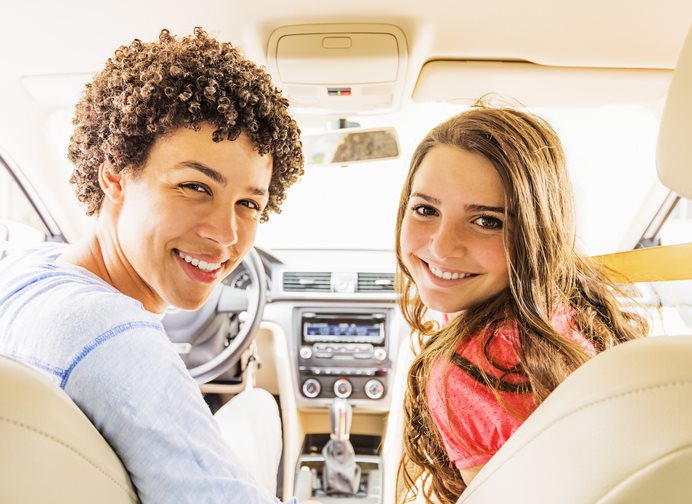Perspective
‘100 deadliest days’ for teen drivers begin in May
April 25, 2022
by PEMCO Insurance
How can I keep my teen driver safe during the ‘100 deadliest days?’
New teen drivers (ages 16 and 17) are 17% more likely to be involved in a deadly crash between Memorial Day and Labor Day than at any other time of the year. AAA has dubbed it the “100 deadliest days for teens” – an especially nerve-wracking time for parents, considering teens already have three times the fatal crash rates of adults.
Researchers say the combination of end-of-school events, unstructured time, late nights and recreational driving on unfamiliar routes fuels the spike in crashes during the summer months.
Parents can guide their teens in two key areas – limiting teen passengers and avoiding impaired driving – to help them steer clear of tragedy.
 How does limiting teen passengers reduce crashes?
How does limiting teen passengers reduce crashes?
The risk of a fatal crash goes up 44% when a teen has passengers in the car, according to the National Safety Council (NSC). A study by the University of North Carolina shows why. Teen drivers coping with loud conversations were six times more likely to have near-miss situations (requiring evasive maneuvers). Horseplay bumped the risk three times. The study followed 52 teens over six months using cameras mounted in their cars.
Researchers also noted that behaviors teens could control (eating, using a phone) were less likely to lead to trouble than distractors they couldn’t (rowdy friends). NSC analysts suggested the difference may be as simple as duration. Distraction from eating or phones lasted only seconds or minutes. Friends were there for the whole ride.
To help, parents can strictly enforce the state’s graduated licensing laws, which limit the number of passengers new drivers can carry. Also, consider “house rules” to extend them beyond the law’s requirements. Consider driving curfews based not on the clock, but on darkness. Driving after dark is another factor that increases the risk of teen crashes, according to the NSC.
How can I discourage my teen from driving impaired?
Drinking and driving is involved in 17% of fatal teen crashes. No one wants to think about their teen drinking alcohol, much less driving after doing it. Yet in a PEMCO Poll, 20% of adults admitted that they drank on prom night – making it a teachable moment many parents can relate to.
Rather than focusing on the intoxicant – alcohol, marijuana or anything else – some parents have found success in shifting the conversation to staying out of the car if the teen (or their friend or date) feels less than 100% competent to drive. That includes times when the driver is sleepy, sick, excessively emotional (angry, crying, stressed out, confrontational, etc.) and, of course, intoxicated.
The key is ensuring your teen understands there’s no penalty (like losing driving privileges) for being late, leaving the car parked or refusing to ride with someone else for any reason. Encourage them to call for a no-questions-asked ride home any time day or night. Or, if they can’t reach you, promise that you’ll pay for a taxi or rideshare. Focus on making the responsible safety choice – not the reason for it. “Rides home” are part of our Parent-Teen Driving Agreement.
This summer, high gas prices may have an unexpected silver lining. In 2008, the last time gas prices lingered above $4 a gallon, the nation experienced a drop in accidents – and drunk-driving accidents, in particular – as people drove and socialized less. The effect was especially strong among young drivers.
Ready to learn more about helping your teen mature into a safe driver? Check out our Teen Driving Blog.
Share on social media